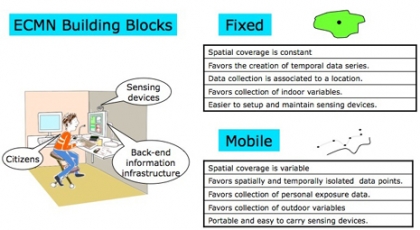My last post asked a few questions about how new product design approaches could promote sustainable consumption. Along the same lines, let’s explore how product designers might collect better and more data on product use to inform the ecodesign process. Potential solutions present some quite promising ideas for product designers. Think of it as a wildlife-tagging program for products monitored in social networks.
Here’s how I frame the issue:
What are appropriate strategies and tools that could help design teams create products supporting collaborative environmental monitoring to inform ecodesign and motivate sustainable behavior? How can collected data be timely incorporated into product design such that it can inform both designers and consumers in a participatory ecodesign setting?
Cristina Gouveia and colleagues1, 2 explored the role of the public in environmental monitoring beyond isolated initiatives and official environmental monitoring networks. Information and communication technologies (ICT) can empower citizens to develop environmental collaborative monitoring networks (ECMN) with environmental data collected by volunteers and community-building mechanisms promoting behavioral changes.
The building blocks of ECMN are motivated citizens, sensing devices and back-end information infrastructure. Individuals can use their households, offices or schools as fixed stations for environmental monitoring; they can also be mobile sensors using mobile communication and computing to collect and communicate in situ and real-time environmental data. Ultimately, ECMN promote collaboration among the different stakeholders – from the general citizen to environmental experts and decision-makers.
The Sustainability Information Lab at UC Berkeley is also conducting interesting research projects exploring how information about the environmental, social, and health effects of products and companies is provided to consumers in the marketplace. For example, they are assessing and recommending new information infrastructure and institutional designs that can make more credible and relevant information available to the public, companies, governments, and consumers. New technologies, such as RFID chips embedded inside products, may support much more effective flows of product and environmental information along supply chains.
So, what if product designers and consumers collaborate in ECMN-driven social networks? What if environmental information systems and infrastructures of companies are designed to go beyond their supply chain and monitor the environmental performance of their products during use?
For example, in a participatory ecodesign monitoring system and social network, consumers would provide tracking data with sensors, such as GPS and RFID chips3 or other smart sensors embedded in the products they use and discard. These data would inform the design team in real time about product environmental performance from real use, while potentially raising consumers’ environmental awareness concerning their use of products.
Collected data could also be used in portals such as PEMS Web (Public Environmental Modeling and Simulation Web). PEMS provides the general public with access to a web of computer-based, environmental models and simulations shared by experts and researchers from around the world. The simulations provided by PEMS Web could further inspire new product design strategies and consumer’s sustainable behavior.
What is fascinating about these approaches is not just that they have the potential to provide volumes of product-use data and simulations relatively easily, and thus better inform product designers to devise appropriate ecodesign strategies. They also provide yet another way to move towards sustainable consumption by collaboratively mobilizing public awareness and promoting informed consumption and behavior change.
References
- Gouveia, C, Fonseca, A., Câmara, A., Ferreira, F. (2004). Promoting the Use of Environmental Data Collected by Concerned Citizens through Information and Communication Technologies. Journal of Environmental Management 71 (2): 135-154.
- Gouveia, Cristina (2008). Environmental Collaborative Monitoring: Linking Senses. Ph.D. Thesis. New University of Lisbon, Portugal.
- Lee, J.A. & Thomas, V.M. (2004). GPS and Radio Tracking of End-of-Life Products. In Proceedings of the 2004 IEEE International Symposium on Electronics and the Environment, pp. 312-309.
Image:

